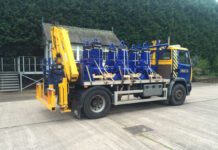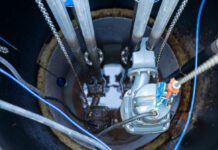Water solutions provider Xylem has confirmed successful trials of its virtual reality (VR) capabilities, which it says will bring customers closer to complex pumping solutions.
The project, which was started at Xylem’s Flygt office in Sundbyberg, Stockholm, uses virtual simulations of 3D CAD models to take the customer through various pump station layouts. This enables more informed decisions to be made on the right solution for their requirements, says Xylem.
“The water and wastewater industries are facing unprecedented challenges; not least a growing population and unpredictable climates” says Jamie Mills, Systems Engineer for Xylem UK & Ireland. “We therefore need to react faster and be more efficient by adopting more creative, innovative solutions to solve these problems.”
He continues: “VR is a particularly promising technology for the water industry because it allows the supply chain and owner operators to collaborate in the same virtual environment and identify problems before construction, for example the position and accessibility of valves. 3D visualisation is also the best way to present complex benching and baffle design which has benefits for both construction and design review. Leveraging technology in this way drives key efficiencies for capital deliver and asset management.”
The concept of VR for pumping stations was initiated by Adam Sheehan, Pump Station Design Specialist at Xylem Flygt, after a colleague brought a VR headset into the office at Sundbyberg.
“It got me thinking about how we could use smart technologies, like VR to make complex products more accessible to the customer,” Adam explains.
The team at Sundbyberg developed a virtual model of a pump station by transferring existing product data into gaming software to develop a VR scene.
“Our first trials with customers were a huge success,” he says. “We were able to use specialist software to generate an accurate virtual “tour” of a complex pumping station, which allowed our customers to understand how it would work in-situ. We were also able to present multiple options to the customer, so that they could compare the performance of different pump station simulations.”
“We’re investigating the feasibility of using Computational Fluid Dynamics (CFD) to simulate the water in pumps as part of an enhanced VR model,” Adam explains. “We also want to make sure that services such as this are available to everyone. VR headsets still carry a hefty price tag, so we’re working on adapting out VR simulations for smartphones as well.”







